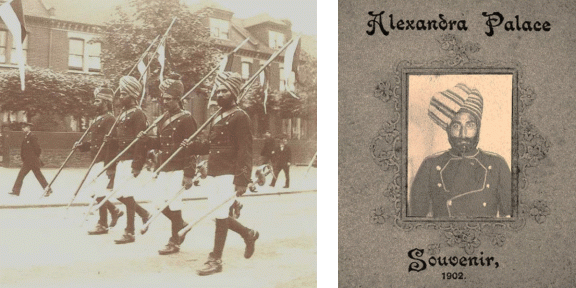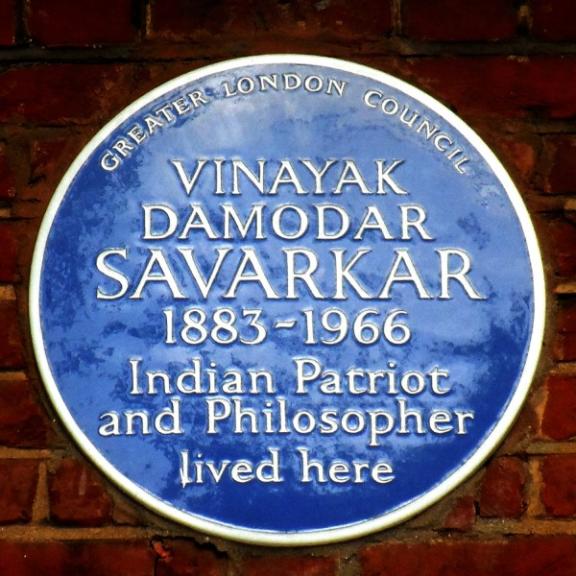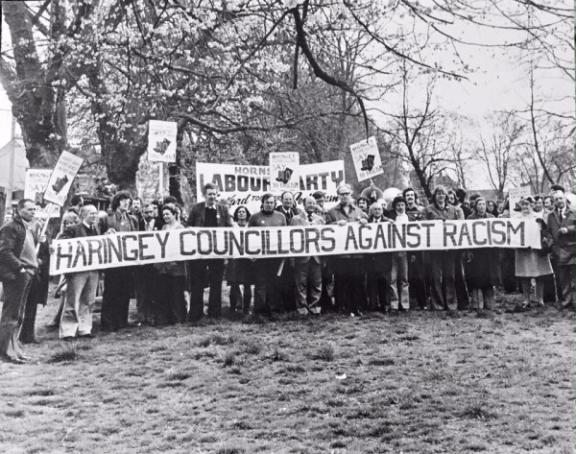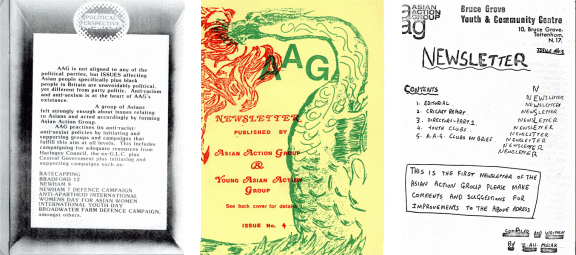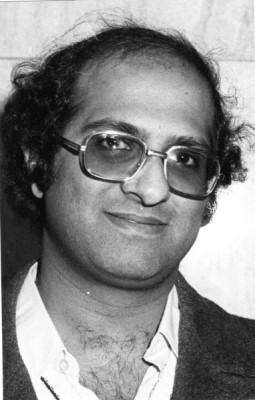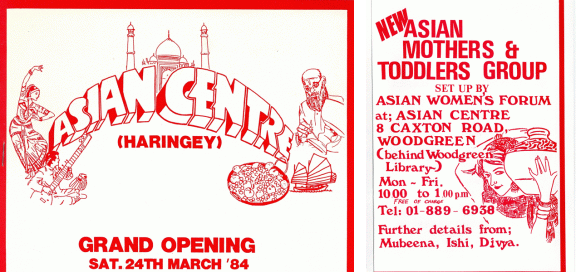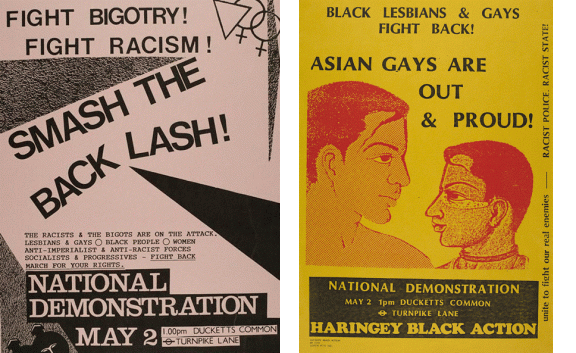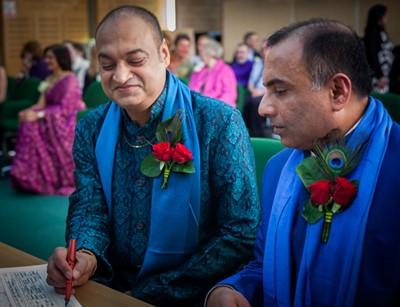1980s
1980
A steering group was set up in 1980 which later became the stronger Joint Council of Asian Organisations. This was replaced by a new constitution of the Council of Asian People (CAP) in 1984.
1980 - 1989
The Curzon Cinema at 92 Frobisher Road, Harringay, overlooking Duckett’s Common, had a Sunday programme of Asian films.
1982
Haringey Council’s first South Asian councillor was Narendra Makanji (1953-2019), serving in the Noel Park ward in Wood Green from 1982 - 2006. He was a key figure in the opposition to racism, campaigning for equalities in the Greater London Council in the 1980s, helping to establish the first Black History Month, opposing Apartheid in South Africa, was the Chair of Whittington Hospital, and also played a key role in his community as chair of the Bernie Grant Trust and on the board of the Selby Trust.
1983
The London Islamic Cultural Society.was formed in the house of Abdool Alli by a small group of Muslims from Guyana, South America who saw the need to bring together its members both culturally and religiously. In 1985 the society bought its first premises in Park View Road, Tottenham.
1983
Former police Chief Superintendent Dal Babu OBE started his career as a police constable serving in Tottenham in 1983. On his retirement in 2013, he has been working with communities and young people in Haringey and around London.
1983
The Asian Workers Group (Haringey) was formed in response to the need felt by Asian workers in local government and voluntary agencies. The number of South Asians in these positions being a minority, the aim was to develop an effective campaigning body to raise awareness of their needs and that of their community.
1983
Legendary cricketer Kapil Dev attended the grand opening of the Saree Emporium in Turnpike Lane after India’s first World Cup win in 1983. Some 1,500 fans crowded the street to see him.
1984
The Asian Centre (Haringey) in Caxton Road, Wood Green, was officially opened on 24 March 1984 as a community, cultural, welfare and educational centre for all Asians living in and around the borough of Haringey (about 24,000 at that time). It came into existence through the initiative and efforts of the joint Council of Asian Organisations (Haringey). It was to especially meet the needs of women, the elderly and young people and, with the Asian Forum, set up activities such as the regular Asian Mothers and Toddlers Group.
1985
The Asian Women’s Action Group was set up in 1985 at 18a Edison Road, Hornsey.
1985
Founded in 1985, for the next 35 years until 2020 the Tagore Centre had a collection and library at Alexandra Park Library in Muswell Hill. The centre provided information and research facilities on all aspects of Rabindranath Tagore (1861-1941), the poet, philosopher and thinker.
1985
Manoj Ambasna founded Collage Arts in 1985, which merged with Haringey Arts Council. Now Executive Director of Collage Arts it is the highly successful and engaging cultural and creative arts organisation based in The Chocolate Factory in Wood Green.
1985
The Festival of India was held at Alexandra Palace. See some photographs of the festival by Alan Denney.
1985
Activist and writer Savitri ‘Savi’ Hensman was the Outreach and Development Officer who helped launch London’s first Black Lesbian and Gay Centre in 1985. Supported by the Greater London Council, the centre was housed in an annex of Tottenham Town Hall. During the late 1980s, Savi joined Haringey Council’s Lesbian and Gay Sub-Committee and was involved in the campaign against Section 28. She was also part of the Positive Images group and Haringey Black Action.
1987
Black History Month launched in the UK. Haringey Councillor Narendra Makanji was one of the founders.
1987
The London Islamic Cultural Society purchased the former synagogue at 389-395 Wightman Road, N8 to develop their organisation and activities for the community.
1987
The Peace Mural 1 by Anthony Steele was created on the end wall of Roachford Block on Broadwater Farm in 1987. It shows portraits of Ghandi, Martin Luther King and John Lennon.
1987
Positive Images and Haringey Black Action organised ‘Smash the Backlash', the first UK demonstration to highlight the experiences of Black and Asian lesbians and gay men. Campaigning against what was to become Section 28, protestors rallied on 2 May 1987 at Duckett’s Common at Turnpike Lane. The 3,500 strong march demonstrated from Turnpike Lane, around The Roundway to end at Bruce Castle Park.
1989
Trailblazer and advocate Rafaat Mughal OBE (1939-2021) was a founder of the JAN Trust, setting it up initially in her own sitting room at home. Here she was helping women, living in Haringey, who were facing extreme deprivation and had a dire need for access to basic skills and opportunities, including English language, education, jobs and an understanding of British services and systems. Rafaat understood she had to formalise a support service for these local communities and established JAN Trust to advise and empower marginalised women who, like herself leaving Uganda and coming to Britain in 1972, were facing challenges and hardship.
Gurbux Singh (born 1950) had been working in local government during the 1980s and became Chief Executive of Haringey Council in 1989. He was the first Asian ever to be appointed to such a high-level post in London.

